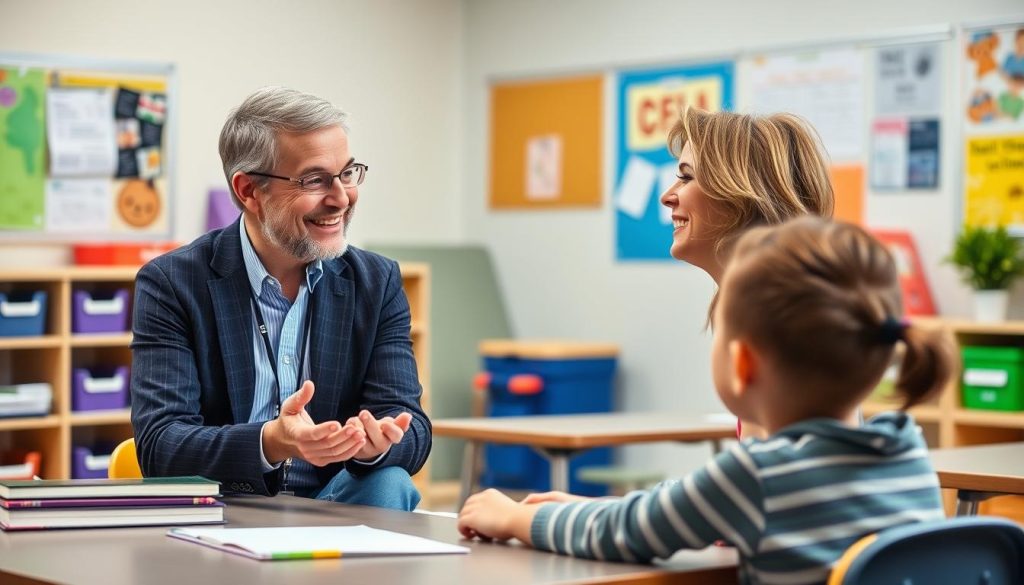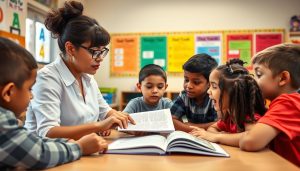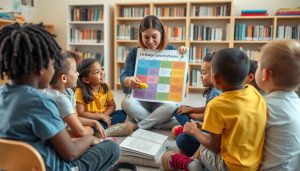Why Effective Communication Strategies Matter in K12 Education
Communication forms the foundation of successful educational partnerships. When teachers and families communicate effectively, students benefit from consistent support both at home and school. According to a 2016 study published in the Journal of Educational and Psychological Consultation, strong teacher-family communication correlates with improved academic performance, better attendance, and more positive student attitudes toward learning.
Effective teacher-parent conferences build trust and create shared understanding
Developing strong teacher skills in communication isn’t just about conveying information—it’s about building relationships based on trust, respect, and shared goals. When educators master effective communication strategies, they create an environment where:
- Parents feel valued as partners in their child’s education
- Misunderstandings are quickly addressed before becoming conflicts
- Students receive consistent messages about behavioral and academic expectations
- Diverse family perspectives and cultural backgrounds are respected and incorporated
- Educational decisions benefit from both home and school insights
As teacher skills evolve to meet the changing needs of today’s students and families, communication approaches must adapt as well. Let’s explore practical strategies you can implement immediately in your classroom.
Foundational Effective Communication Strategies for Educators
Before diving into specific techniques, let’s establish the core communication principles that form the foundation of successful teacher-family interactions. These fundamental teacher skills apply across grade levels, subject areas, and diverse family contexts.
Active Listening: The Heart of Effective Communication
Active listening goes beyond simply hearing words—it involves fully engaging with the speaker to understand their perspective. For teachers, this essential skill demonstrates respect and builds trust with families.
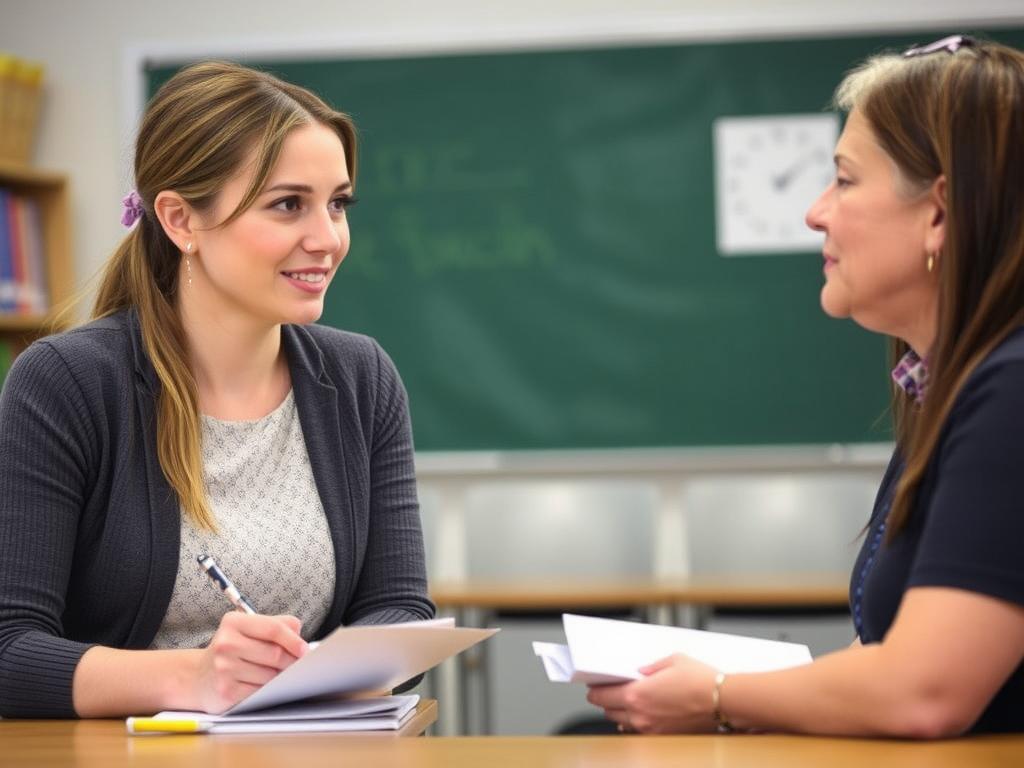
To strengthen your active listening teacher skills:
- Focus completely on the family member speaking, avoiding distractions like checking email or glancing at your phone
- Acknowledge understanding through verbal and non-verbal cues (nodding, saying “I see”)
- Ask clarifying questions to ensure you’ve correctly interpreted their message
- Paraphrase what you’ve heard to confirm understanding
- Resist formulating responses while the other person is still speaking
Clear and Concise Messaging
Families receive information from numerous sources. Your communication competes for attention with work emails, social media, and other school communications. Developing teacher skills in crafting clear, concise messages ensures your important information gets through.
Effective Approaches:
- Lead with the most important information
- Use simple, jargon-free language
- Break complex information into digestible chunks
- Include specific action items when needed
- Provide context for why the information matters
Common Pitfalls:
- Burying critical details in lengthy paragraphs
- Using educational terminology unfamiliar to families
- Sending too many communications too frequently
- Lacking clear purpose or next steps
- Assuming all families have the same communication preferences
Cultural Responsiveness in Communication
Today’s classrooms serve increasingly diverse student populations. Developing teacher skills in culturally responsive communication demonstrates respect for all families and creates more inclusive learning environments.
Research from the Colorín Colorado project shows that acknowledging and adapting to cultural differences significantly improves family engagement, particularly for immigrant families and English language learners.
Enhance Your Cultural Communication Skills
Discover practical strategies for connecting with diverse families in our specialized professional development course. Learn to bridge cultural and linguistic differences while building stronger school-home partnerships.
Practical Effective Communication Strategies for Daily Implementation
Moving beyond foundational principles, let’s explore specific communication approaches you can implement in your classroom immediately. These practical teacher skills address common scenarios K12 educators face when communicating with families.
Establishing Communication Expectations
Setting clear expectations at the beginning of the school year creates a framework for successful ongoing communication. Consider creating a communication plan that outlines:
- Preferred contact methods and typical response times
- Regular communication channels (newsletters, apps, emails) and their frequency
- Best times to reach you and appropriate contact protocols
- Emergency communication procedures
- Opportunities for in-person meetings beyond scheduled conferences
Leveraging Technology Effectively
Digital tools have transformed teacher-family communication, offering unprecedented opportunities for connection. However, technology should enhance rather than replace meaningful personal interactions. Developing teacher skills in digital communication helps you select and use tools appropriately.
| Communication Tool | Best Uses | Considerations |
| Classroom Apps (ClassDojo, Seesaw) | Sharing student work, quick updates, positive reinforcement | Ensure all families have access and training; don’t overpost |
| Detailed information, formal communications, documentation | Keep concise; be mindful of tone; check spam filters | |
| Text Messaging | Time-sensitive reminders, brief updates | Maintain professional boundaries; respect family privacy |
| Video Conferencing | Virtual conferences, demonstrations, accommodating busy schedules | Provide technical support; offer alternatives for those without access |
| Learning Management Systems | Assignment details, curriculum resources, grade updates | Ensure user-friendly interface; provide training for families |
Remember that digital equity remains a concern in many communities. Always provide alternative communication methods for families with limited technology access, and consider surveying families about their preferences early in the school year.
Navigating Difficult Conversations
Perhaps the most challenging aspect of teacher-family communication involves addressing sensitive topics like behavioral issues, academic struggles, or disagreements about educational approaches. These situations test your teacher skills and require thoughtful preparation.
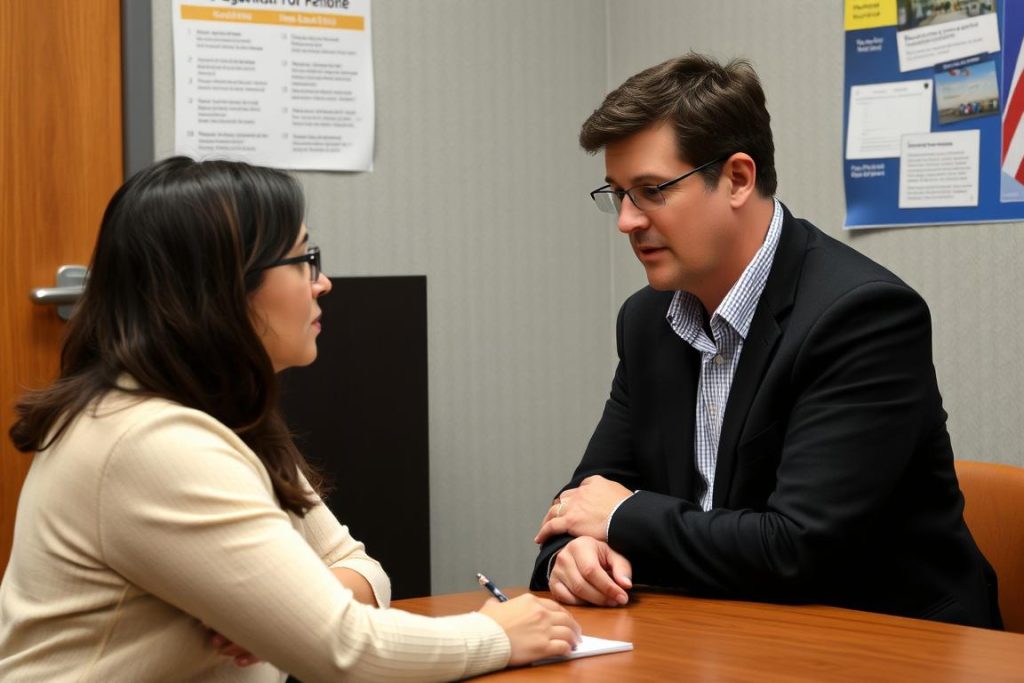
When preparing for difficult conversations:
- Plan but don’t script – Organize your thoughts while remaining flexible
- Lead with positives before addressing concerns
- Use specific examples rather than generalizations
- Focus on solutions rather than just problems
- Acknowledge emotions while maintaining professionalism
- Document the conversation and agreed-upon next steps
“The most effective teachers approach difficult conversations with families as collaborative problem-solving opportunities rather than confrontations. This partnership mindset transforms potentially adversarial interactions into productive dialogues focused on student success.”
– Dr. Karen Mapp, Harvard Graduate School of Education
Master Difficult Conversations
Our professional development course provides practical frameworks and scripts for navigating challenging discussions with families. Develop essential teacher skills for turning difficult conversations into opportunities for stronger partnerships.
Overcoming Common Barriers to Effective Communication Strategies
Even with strong teacher skills and the best intentions, various obstacles can impede successful communication with families. Recognizing and proactively addressing these barriers is essential for inclusive educational partnerships.
Language Differences
In linguistically diverse communities, language differences present significant communication challenges. Developing teacher skills to bridge these gaps demonstrates respect for all families and ensures equitable access to information.
Practical Solutions:
- Identify family language preferences early in the year
- Utilize translation services for written communications
- Arrange for interpreters during conferences when needed
- Learn key phrases in commonly spoken languages
- Use visual supports to complement verbal information
Time and Scheduling Constraints
Both educators and families face significant time pressures that can limit communication opportunities. Flexible approaches demonstrate respect for family circumstances while maintaining necessary connections.
- Offer varied conference times, including early mornings, evenings, or weekends
- Utilize asynchronous communication options (recorded videos, voice messages)
- Create efficient communication systems that respect everyone’s time
- Consider home visits for families unable to come to school
- Prioritize communication for families with whom you’ve had less contact
Building Trust Across Differences
Some families may approach school communication with hesitation based on their own negative educational experiences or cultural differences in how education systems are viewed. Developing teacher skills in trust-building is essential for overcoming these barriers.
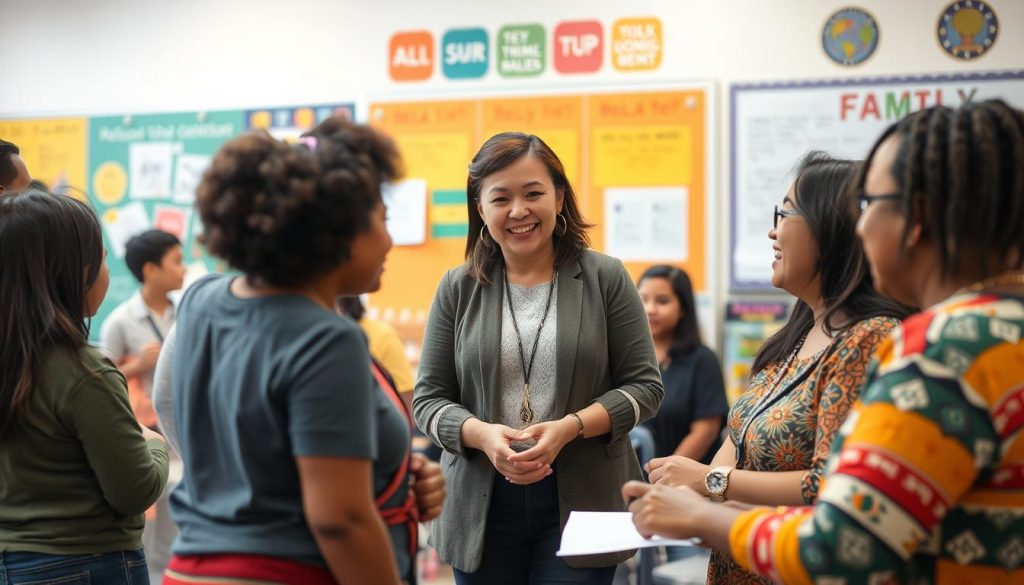
Building trust requires consistent, respectful engagement with all families
Strategies for building trust include:
- Starting with positive communications before addressing concerns
- Learning about family cultural backgrounds and communication preferences
- Acknowledging and validating family expertise about their children
- Following through consistently on commitments and promises
- Creating opportunities for informal, positive interactions
Remember: Trust builds gradually through consistent, positive interactions. Small gestures—like remembering details about a family’s situation or promptly responding to concerns—contribute significantly to establishing trusting relationships.
Leveraging Technology in Effective Communication Strategies
Digital tools have transformed how teachers connect with families, offering unprecedented opportunities for frequent, meaningful communication. Developing teacher skills in technology use helps you select and implement the right tools for your classroom community.
Selecting Appropriate Communication Platforms
With numerous educational technology options available, choosing the right communication platforms requires careful consideration of your specific classroom needs and family circumstances.
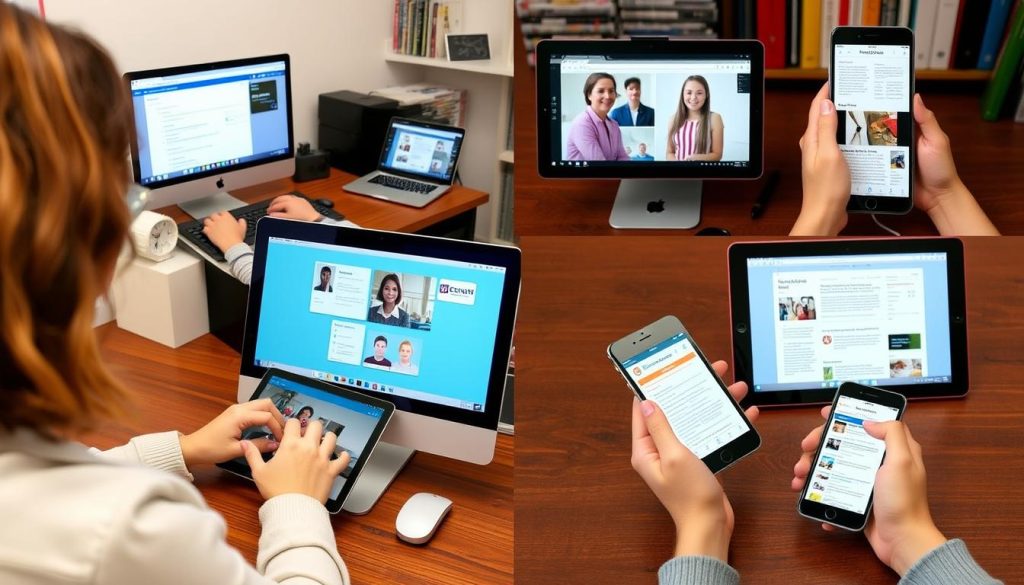
When evaluating communication platforms, consider:
- Accessibility for all families, including those with limited technology or internet access
- Translation capabilities for linguistically diverse communities
- Privacy and security features that protect student and family information
- Ease of use for both teachers and families with varying tech comfort levels
- Integration with existing school systems and other classroom tools
Creating Engaging Digital Communications
Digital formats offer creative possibilities for making your communications more engaging and effective. Enhancing your teacher skills in digital content creation can significantly improve family engagement.
Digital Newsletter Best Practices:
- Use consistent, scannable formatting
- Include visual elements (photos, icons)
- Keep content concise with clear headings
- Highlight upcoming events prominently
- Include student work and classroom highlights
Video Communication Tips:
- Keep videos under 3 minutes when possible
- Use captions for accessibility
- Ensure good lighting and clear audio
- Include visual supports for key points
- Maintain a warm, conversational tone
Enhance Your Digital Communication Skills
Our specialized course helps you master digital tools for family engagement. Learn to create engaging newsletters, effective video updates, and accessible digital resources that strengthen home-school connections.
Case Studies: Successful Effective Communication Strategies in Action
Examining real-world examples helps illustrate how these communication principles and teacher skills translate into practice. The following case studies highlight educators who have successfully implemented effective communication strategies to strengthen family partnerships.
Elementary Case Study: Building Community Through Consistent Communication
Ms. Rodriguez, a third-grade teacher in an urban district with high linguistic diversity, transformed her family engagement through systematic communication approaches.
Key Strategies Implemented:
- Weekly bilingual newsletters with QR codes linking to video explanations
- Monthly “Celebration of Learning” events scheduled at varying times
- Family communication preferences survey used to personalize outreach
- Student-led digital portfolios shared quarterly with families
- Text message system for quick updates and reminders
Results:
Family conference attendance increased from 65% to 98% within one academic year. Student homework completion rates improved by 40%, and families reported feeling significantly more connected to classroom learning.
Middle School Case Study: Team-Based Communication Approach
The seventh-grade team at Westlake Middle School addressed declining family engagement by implementing coordinated communication strategies across subject areas.
Key Strategies Implemented:
- Unified team communication platform with single login for families
- Coordinated assignment calendar to prevent overwhelming students
- Quarterly team conferences offering comprehensive progress updates
- Student-led goal setting involving both teachers and families
- Weekly team office hours (virtual and in-person) for family questions
Results:
The coordinated approach reduced family complaints about inconsistent communication by 75%. Student academic performance improved across all subject areas, and teacher job satisfaction increased as communication workloads became more manageable.
These case studies demonstrate how intentional communication approaches can transform educational partnerships. While specific strategies vary by context, the underlying principles of consistency, accessibility, and respect remain constant.
Measuring the Impact of Your Effective Communication Strategies
How do you know if your communication efforts are working? Developing teacher skills in assessment and reflection helps you continuously improve your family engagement approaches.

Quantitative Measures
Consider tracking these measurable indicators to assess communication effectiveness:
- Response rates to different communication types
- Conference attendance percentages and trends
- Digital engagement metrics (email opens, app usage, etc.)
- Homework completion rates and assignment understanding
- Volunteer participation and event attendance
Qualitative Feedback
Numbers tell only part of the story. Gathering qualitative feedback provides deeper insights into communication effectiveness:
- Brief family surveys about communication preferences and satisfaction
- Student feedback about how well families understand classroom activities
- Colleague observations and suggestions about communication approaches
- Self-reflection on which strategies seem most effective
- Direct questions during conferences about communication effectiveness
Pro Tip: Create a simple communication log to track your outreach efforts and family responses. This documentation helps identify patterns and ensures all families receive equitable attention throughout the year.
Developing Your Teacher Skills in Communication
Like any professional capability, communication skills develop through intentional practice and ongoing learning. Investing in your growth as a communicator yields benefits throughout your teaching career.
Self-Assessment: Where Are Your Communication Strengths?
Begin by honestly evaluating your current communication practices:
Rate your current communication effectiveness:
After self-assessment, identify specific areas for growth and seek resources to strengthen those teacher skills.
Professional Learning Opportunities
Numerous resources exist to help you develop more effective communication strategies:
- Formal courses focused on family engagement and communication
- Professional learning communities where teachers share effective practices
- Books and articles on educational communication and family partnerships
- Mentorship from colleagues with strong family communication skills
- Feedback from families about what communication approaches work best for them
Elevate Your Communication Skills
Our comprehensive professional development program provides research-based strategies, practical templates, and personalized coaching to enhance your teacher skills in family communication.
Conclusion: Your Journey to More Effective Communication Strategies
Developing strong communication practices is an ongoing journey rather than a destination. As you implement the effective communication strategies outlined in this guide, remember that small, consistent improvements yield significant results over time.
The teacher skills you develop in communication extend beyond family engagement—they enhance your professional relationships with colleagues, administrators, and most importantly, your students. By modeling effective communication, you teach students valuable life skills through your example.
We encourage you to select one or two strategies from this guide to implement immediately. Start small, measure results, and gradually expand your communication toolkit as you gain confidence and see positive outcomes.
“The single most important factor in determining student success is not the color of their skin or their ZIP code or even their parents’ income – it is the quality of their teacher and the instruction they receive. And when teachers partner effectively with families through strong communication, student achievement soars.”
– Arne Duncan, former U.S. Secretary of Education
Remember that effective communication strategies are not about perfection but about connection. Each positive interaction builds stronger partnerships that ultimately benefit your students—which is, after all, why we chose this profession.
Ready to Transform Your Communication Approach?
Take the next step in developing your teacher skills with our comprehensive communication course. Gain practical strategies, customizable templates, and expert guidance to build stronger family partnerships.

